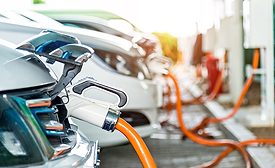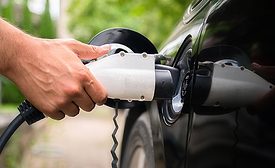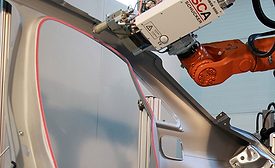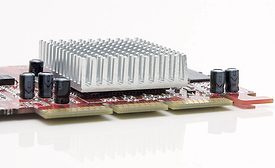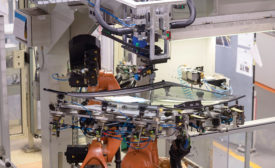Home » electric vehicles
Articles Tagged with ''electric vehicles''
Although binder adhesives are a small component of the lithium-ion batteries that power electric vehicles, they play a critical role in ensuring performance and efficiency while providing improved battery kinetics.
Read More
Case Study
Structural Adhesives are Reaching New Heights with an Innovative Electric Vehicle
Sika serves as the adhesive bonding technology partner for a world record attempt featuring a 100% solar-powered vehicle.
September 28, 2021
From the Editor
Innovations Abound in the Adhesives and Sealants Industry
From newly developed raw materials and chemicals to finished products and high-tech applications, the adhesive and sealant industry continues to focus on innovation.
August 24, 2021
Solving Challenges in Electric Vehicle Batteries with Pressure-Sensitive Tapes
The electric vehicle space is an area that will provide a tremendous opportunity to converters and others working with high-performance, pressure-sensitive adhesive (PSA) tapes.
August 9, 2021
Seven Ways Adhesives Push Electric Vehicle Design Forward
Adhesives offer significant advancements in electric vehicle safety, cost, durability, and performance.
August 2, 2021
Adhesives for Electronics Assembly
Adhesives provide a strong bond during electronics assembly while protecting components against potential damage.
March 29, 2021
From the Editor
Full Steam Ahead with Transportation Adhesives and Sealants
From complex electronics assemblies to lightweighting and beyond, the incorporation of adhesives and sealants in transportation applications is expanding.
February 12, 2021
Silicone Adhesives for Lifetime Performance in Vehicle Electrification and Autonomy
Module joint design, adhesive selection, substrate choice, and combined mechanical and environmental stresses in the field all impact the longevity of the protective seal on a vehicle's electronic part.
January 27, 2021
Adhesives in Automotive Assembly
Advanced sealants and adhesives in vehicle assembly effectively and safely address key applications that have traditionally employed mechanical fasteners while adding design freedom to today's modern vehicles.
September 29, 2020
Five Key Trends Shaping the Future of Tech Innovation Across All Industries
The five trends that are shaping the post-COVID-19 future include infection prevention, remote commerce, improving resiliency, greater agility, and macroeconomic impacts.
September 14, 2020
Keep the info flowing with our eNewsletters!
Get the latest industry updates tailored your way.
JOIN TODAY!Copyright ©2024. All Rights Reserved BNP Media.
Design, CMS, Hosting & Web Development :: ePublishing
